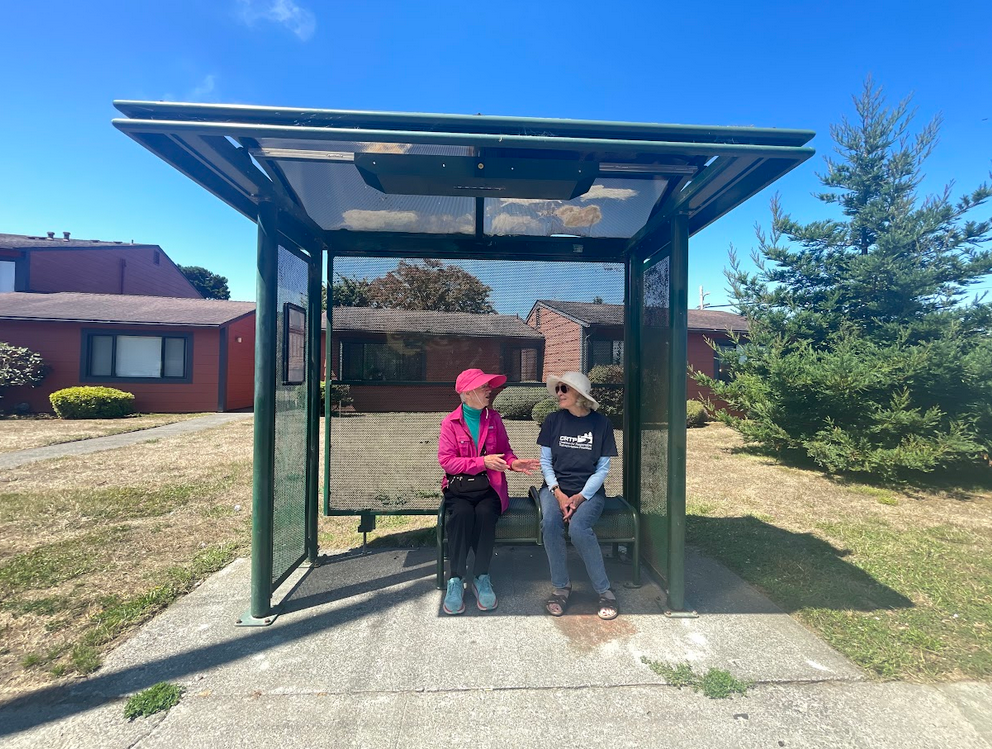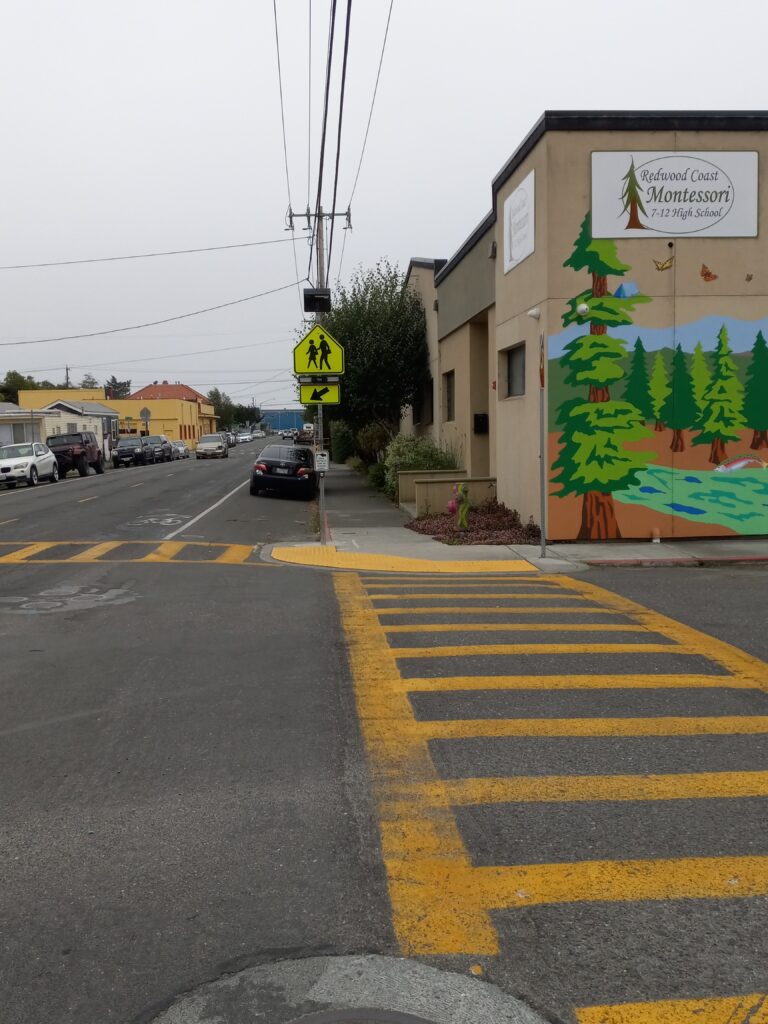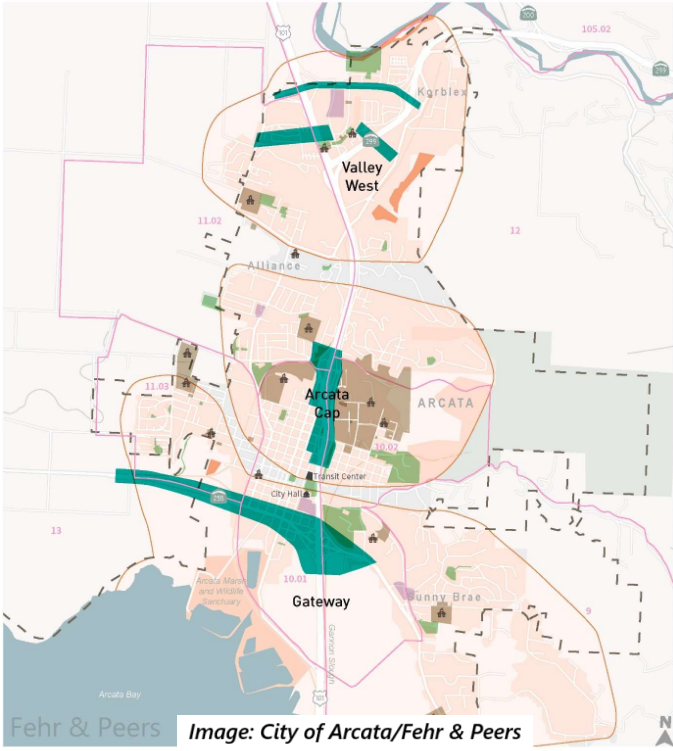The Collector
October 3, 2025
We’re In the Middle of the Week Without Driving!
The national Week Without Driving started on Monday and continues through the weekend. Locally, the Week Without Driving is brought to you by CRTP, Tri-County Independent Living, the Humboldt Transit Authority, and the Humboldt County Association of Governments.
More than 60 people in Humboldt County have signed up to participate in the Week Without Driving this year, including many elected officials, public agency staff, and other community leaders. You can hear from some of those participants in daily posts about their experiences on the Lost Coast Outpost.
Meanwhile, a new national analysis has found that more than 36% of Americans over the age of 10 either can’t drive or lack reliable access to a vehicle. That means that well over 100 million people – including adults and kids old enough to have some independent mobility – are not well served by our country’s obsession with cars and car-based communities and infrastructure.
Safe Routes to School Funding Eliminated
This week, the Humboldt County Department of Health and Human Services released a list of public health programs which lost their funding as of October 1st, thanks to the “Big Beautiful Bill” passed by Republicans in Congress and signed by President Trump. One of the programs which will no longer be funded is the long-running, and traditionally bipartisan, Safe Routes to School program.
For many years, this program has supported education, planning, and infrastructure improvements to make it safer for kids to walk or bike to school. While the program was always under-funded, its complete elimination is a major blow to efforts to improve the health and safety of school kids – and everyone else, because it’s not just kids who benefit from safer bike and pedestrian infrastructure.
Don’t Forget to Take These Surveys!
As we mentioned last week, there are currently two important opportunities for you to weigh in on the future of transportation in Humboldt County: One survey on the long-term Regional Transportation Plan that is currently being updated, and a second survey on the development of a plan to eliminate traffic fatalities and serious injuries in the county. Please take these quick surveys and speak up for safe, equitable, and sustainable transportation!
Can Arcata’s Neighborhoods Be Reconnected?
Last year, the city of Arcata was one of three communities in California to be selected by the state to receive tens of millions of dollars for projects to reconnect neighborhoods long separated by highways. The headline item in Arcata’s proposal was a “highway cap” – an enormous land bridge over US-101 connecting downtown with the Cal Poly Humboldt campus. But the highway cap, while exciting, is a long-term, speculative approach, and has always been only one of several potential strategies for bridging the gaps created by Highways 101, 299, and 255.
In the eighteen months since that funding was announced, the state has scaled back its promises, and now it’s unclear if the city will receive any money for the project. Nevertheless, the Arcata City Council this week approved spending $300,000 of its own money to hire a consultant to start the planning process. The hope is to leverage this initial investment to improve the odds of receiving more state or federal funding in the future.
Like many Arcatans, CRTP is excited about the possibilities a highway cap could create. Nevertheless, we strongly believe that the city shouldn’t bet everything on a cap, and instead should also plan for other, lower-cost bike and pedestrian access improvements that have a higher chance of being built in the foreseeable future. That includes improvements that could be quickly made to existing overpasses without expensive structural changes. We also agree with Councilmembers who argued that the Valley West neighborhood, home to many low-income residents and isolated by highways on two sides, should be a top priority for reconnection.
Get Information About Cleaner Mobility Options
On Saturday, several local organizations are hosting a “North Coast Ride & Drive” event at Redwood Acres Fairground in Eureka. While most of the available information focuses on state subsidies for zero-emission vehicles under the Driving Clean Assistance Program, people interested in reducing their transportation emissions should know that a different subsidy, known as the Clean Mobility Option, is also available through the program. This option allows a participant to scrap an older vehicle and receive $7,500 toward bus passes, an e-bike, or car-share or bike-share expenses. If you can’t make it to Saturday’s event, you can check your eligibility here, keeping in mind that the Clean Mobility Option is only available under the Clean Cars 4 All pathway.
If you are considering buying an electric vehicle – and we think anyone looking to buy a car should be – it’s particularly important to be aware of the Driving Clean Assistance Program now. The better-known federal incentives for EVs just ended (another senseless casualty of that “Big Beautiful Bill”), and Governor Newsom walked back his promise to replace that federal tax credit with a state equivalent.
News from Beyond the North Coast
Trump Targets Transit During Shutdown
President Trump has made no secret of his intention to use the excuse of the federal government shutdown to freeze or eliminate programs supported by his political opponents. Public transit seems to be a particular focus for these attacks, as the administration first froze billions in funding for New York City transit projects, then billions more for Chicago transit.
Watch Out for That Robot
Residents of some communities have gotten used to seeing delivery robots on sidewalks in recent years. We have a lot of misgivings about these robots, and we question the assumption of the companies that operate them that they have the right to take up precious sidewalk space. But at least most of these robots have been relatively small and slow-moving.
That is changing with a new robot just announced by DoorDash. The new machine weighs 350 pounds, is almost 5 feet tall, and travels at speeds up to 20 mph. The company announced that the new robot will operate wherever it wants, including sidewalks and bike lanes. The fact that vulnerable road users already compete with big, heavy vehicles for street space, and might not feel safe sharing the few spaces specifically reserved for them with big, heavy automatons, apparently did not occur to the tech gurus over at DoorDash.
The Collector is CRTP’s weekly transportation news roundup, published every Friday. We focus on North Coast news, but we also include relevant state, national and international transportation news – plus other items that we just find kind of interesting! To submit items for consideration, email colin@transportationpriorities.org.



